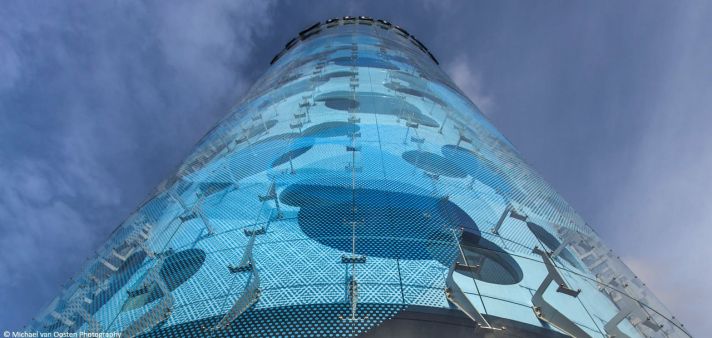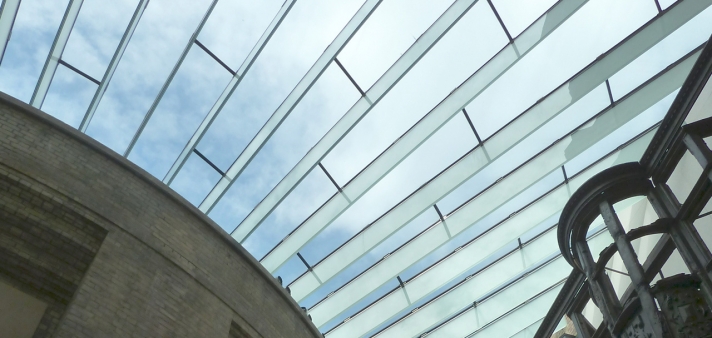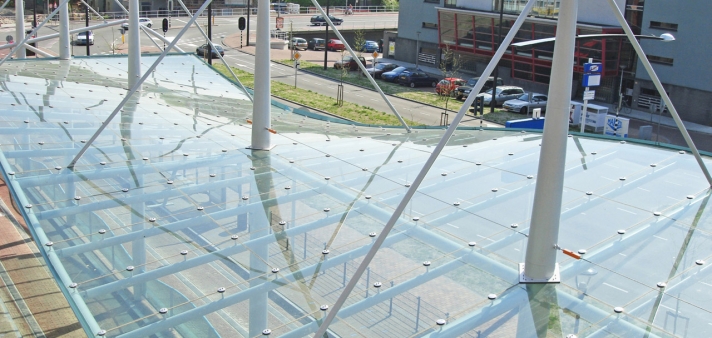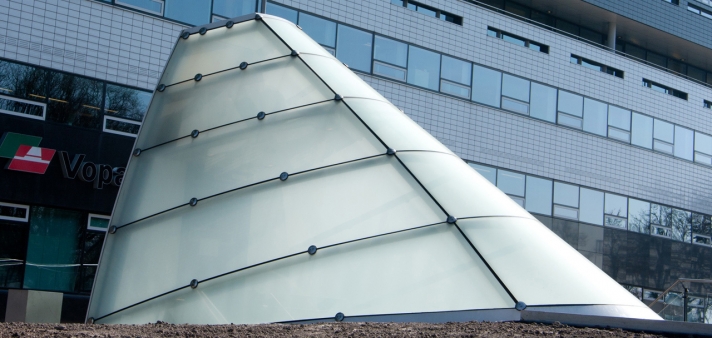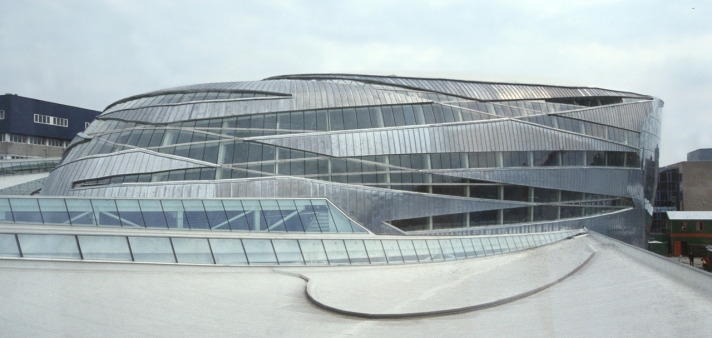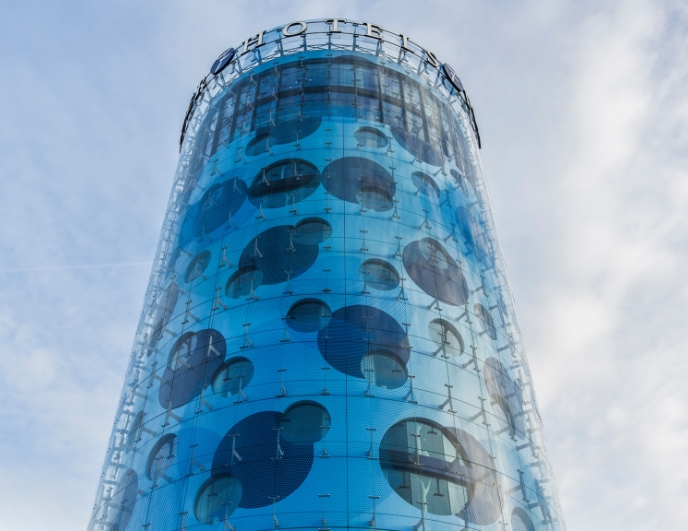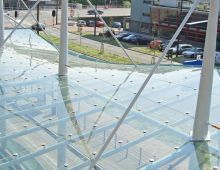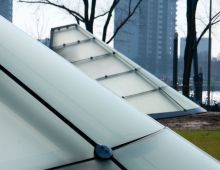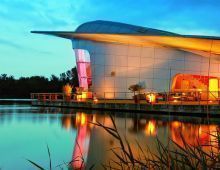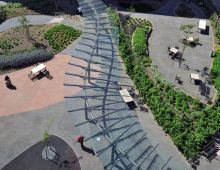Do you have innovative ideas, dreams or designs that are seemingly impossible? We are eager to solve your architectural challenges! Contact us so we can be of assistance.
Shaped glass
Traditionally shaping of glass sheets is done in hot-bending processes, cold–bending of glass sheets however has recently been developed and has important advantages.
In hot–bending, a single or double curve in a glass panel is normally achieved by heating the glass and allowing it to cool in a mould. This process is particularly expensive given that a separate mould needs to be made for each glass shape. Besides any irregularities in the mould will also be visible in the glass. Octatube has been realizing projects with cold-bent glass since 2001. Flat glass sheets are bent and kept in that shape using mechanical pressure at the construction site. Both in single and double curved applications. Cold-bending of framed glass has been used for some time in cylindrical roofs, but it is also possible to cold-bent glass with point fixings. This technique was used by Octatube on the Floriade Paviljoen. During bending, half of the tension applied was used for bending and the other half to take up the wind loading. It is also possible to twist double gazed panels in a frame. For the twisted “spaghetti facade” of the City Hall of Alphen aan den Rijn Octatube used one quarter of the applied tension for cold twisting.
We have thoroughly investigated the theory underlying the bending of glass, allowing us to model and predict the material’s bending and breaking properties. The knowledge we have developed allows us to make superb use of cold-bent single and insulated glass panels. In the atrium roof of London’s Victoria and Albert Museum, fins made entirely of glass carry the glass panels forming the roof. The fins vary in size, with the largest spanning 11 metres in a single piece, and are manufactured in triple laminated glass. C-profiles to clamp the glass fins are attached to the joists with adhesive.

